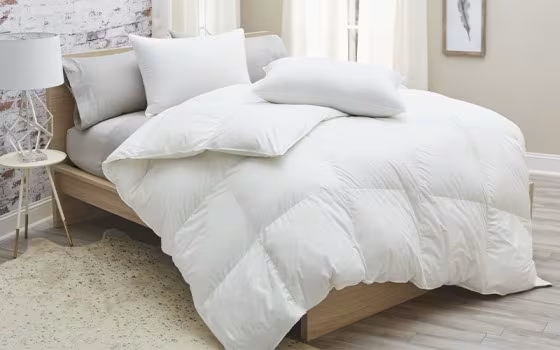To achieve optimal relaxation at night, you need bedding that suits your individual sleeping preferences. Given the multitude of terminology being used, where should one start? You can change up your bedding all year round with the help of the duvet, a distinctive top layer that is sometimes mistaken for a quilt or comforter.
Now, tell me about duvets. At its most fundamental, a duvet is a quilted blanket that protects a filling—-down or down-alternative, for example—with a removable cover. Unlike a traditional comforter, its novel pillow-like structure traps heat without making you feel weighed down.
Brief History:
The duvet originated in rural Europe, particularly in colder regions like Scandinavia and France, where people needed extra insulation during harsh winters. Initially, duvets were made with natural materials such as feathers or down and were enclosed in fabric covers. Over time, they gained popularity worldwide for their comfort and convenience.
The Duvet Cover: What Is It and Why Is It Necessary?

A duvet cover is a protective layer that encases a duvet insert. It resembles a large pillowcase with an opening or zipper closure at one end. Duvet covers are made from soft, breathable fabrics like cotton, linen, or microfiber. They come in various colours, patterns, and designs to suit different decor styles.
Why Is It Necessary?
Protection:
The primary purpose of a duvet cover is to shield the duvet insert from stains, spills, dust, and general wear and tear. This helps to prolong the lifespan of the duvet insert, keeping it clean and hygienic.
Easy Maintenance:
Duvet covers are removable and machine washable, making them easier to clean than the duvet insert. This allows for regular washing and maintenance, ensuring a fresh and sanitary sleeping environment.
Versatility:
Duvet covers can be used alone as lightweight bedding during warmer months or layered with additional blankets or throws for extra warmth in colder seasons. They provide flexibility in adjusting the level of insulation and comfort according to personal preferences.
Style and Decor:
Duvet covers offer a versatile way to update the look of your bedding and bedroom decor. With a wide range of colors, patterns, and textures available, you can easily change the aesthetic of your bedroom to suit your preferences or the season.
How Does a Duvet Cover Work?
A duvet cover is a protective and decorative layer for a duvet insert. It encases the duvet, shielding it from dirt and spills while enhancing the bedroom's aesthetic with various colors and patterns. The cover's design allows for easy insertion and removal of the duvet, and its machine-washable nature ensures convenient maintenance. With internal ties or loops to secure the insert, the cover prevents shifting for even warmth distribution. Overall, a duvet cover combines practicality with style, offering protection and versatility in bedding.
What Is a Duvet Made Of?
A duvet, a comforter in some regions, can be made from various materials, each offering unique warmth, loftiness, and hypoallergenic properties. The primary materials used in duvets include:
Down:
Down is the soft layer of fine feathers found underneath the outer feathers of ducks and geese. It is highly regarded for its exceptional insulation properties, lightweight feel, and luxurious warmth. Down duvets are prized for their fluffiness and ability to regulate body temperature, making them ideal for colder climates.Feathers:
Duvets made with feathers, usually from ducks or geese, offer a more affordable alternative to down. While less lofty or lightweight than down, feather duvets still provide warmth and comfort. They are slightly heavier and may have a firmer feel than down duvets.Synthetic Fibers:
Synthetic fibers such as polyester, microfiber, or hollow fiber are commonly used as filling materials in duvets. These materials mimic the insulating properties of down and feathers while offering hypoallergenic benefits. Synthetic duvets are often more affordable, more accessible to care for, and suitable for individuals with allergies to natural materials.Down Alternative:
Down alternative duvets are filled with synthetic fibers designed to replicate the feel and warmth of natural down. These duvets are hypoallergenic and offer a cruelty-free option for those who prefer not to use animal-derived materials. Down alternative duvets are available in various densities and thicknesses to suit different preferences.
In summary, duvets can be made of down, feathers, synthetic fibers, or down alternative materials, each offering distinct warmth, weight, and allergen sensitivity characteristics. The choice of filling material depends on individual preferences, budget considerations, and desired comfort level.


